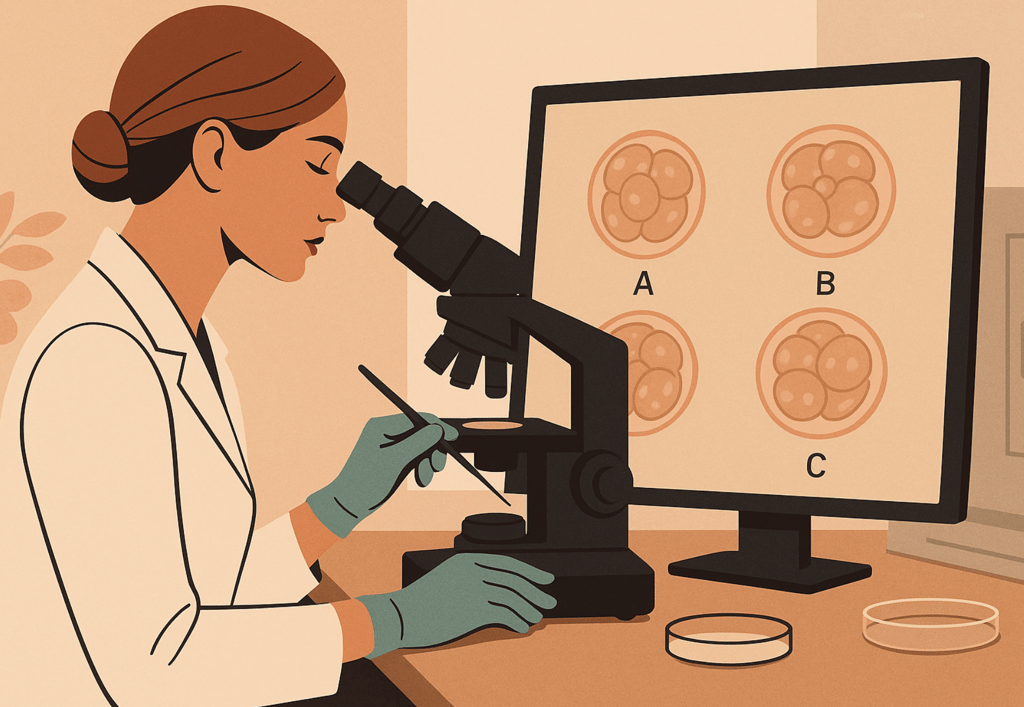Embryo Grading Explained
Learn what embryo grading means in IVF, how clinics assess quality, and why a perfect score doesn’t guarantee pregnancy success.
THE IVF PROCESS STEP BY STEP
8/10/20251 min read


When your embryos are developing in the lab, each one gets a score - a grading system designed to assess how healthy they look under the microscope. It’s one of the most talked-about (and sometimes misunderstood) parts of IVF. Here’s how it works, what the grades really mean, and why they’re not the final word on your chances.
Why Embryos Are Graded
Embryologists can’t see the genetic code of an embryo just by looking at it, but they can examine its structure, growth rate, and symmetry to get clues about its potential. Grading helps:
Select which embryo(s) to transfer first
Decide which are strong enough to freeze
Provide a baseline for discussing success rates
The Grading System: Day 3 vs Day 5–6
Day 3 Embryos (Cleavage Stage)
Graded by cell number, symmetry, and fragmentation.
Ideal cell count is usually 6–10 cells by this point.
Less fragmentation (cell debris) is generally better.
Day 5–6 Embryos (Blastocyst Stage)
Graded with a number + two letters system.
Number (1–6): Stage of expansion (size and cavity).
First letter (A–C): Quality of the inner cell mass (which becomes the baby).
Second letter (A–C): Quality of the outer layer, the trophectoderm (which becomes the placenta).
Example: 5AA = a fully expanded blastocyst with top scores for both inner cell mass and outer layer.
Why a “Perfect” Grade Isn’t a Guarantee
Grading reflects appearance, not genetics. A “perfect” embryo could still have chromosomal issues, and a “lower-grade” embryo can still lead to a healthy pregnancy. Other factors matter too:
Uterine environment
Embryo genetics (only confirmed by PGT)
Your overall health and treatment protocol
Balancing Science and Hope
It’s natural to pin your hopes on the best-looking embryo, but remember:
Grading is a helpful tool, not a crystal ball.
Many parents have healthy babies from embryos with average or even poor grades.
© 2025. All rights reserved.
